How to Register Your Paint Horse
We want to make APHA registration transactions easy, so you can get back to enjoying your Paint Horse. Check out our guides for instructions about some of our most common types of work!
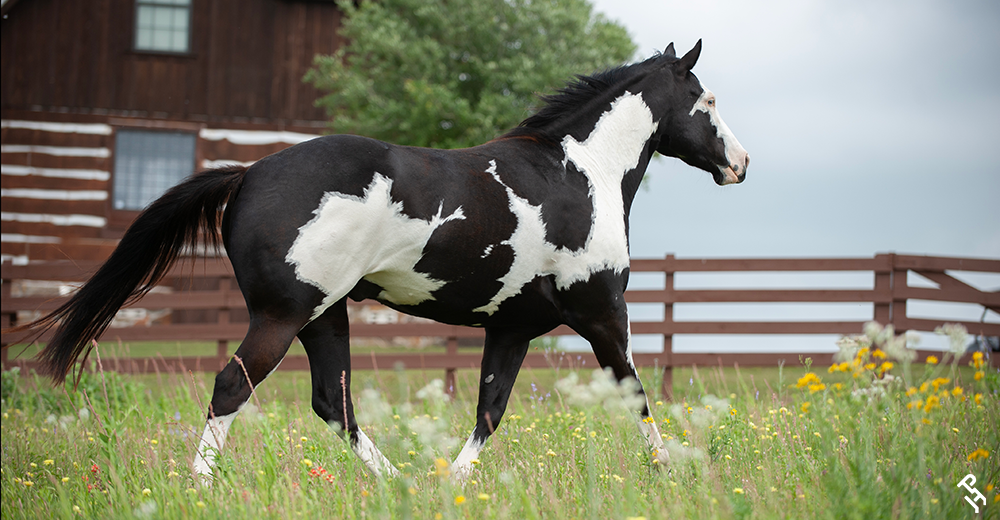
APHA registration makes your horse an official part of the APHA family: it verifies and preserves his pedigree and assigns the horse his own APHA registration number.
The foal owner usually registers the foal—that might be the owner of the dam at the time of foaling, or it might be someone who has purchased the foal. Online registration at PHcentral.com is the fastest and most cost effective way to register your Paint Horse when the foal has at least one APHA-registered parent and all breeding report requirements already on file. If you can’t register online, submit the registration application, photos and payment to APHA via postal mail.
Let’s get started! You’ll need the following:
1. Fill out the application (online or physical form). You’ll need:
- Sire’s registered name and number
- Plus the signature of the sire owner at time of breeding if the breeding isn’t released and you’re submitting by mail
- Dam’s registered name and number
- Plus the signature of the dam owner at time of foaling if submitting by mail
- At least two unique name choices for your foal. Remember, APHA does not allow sound alike names, so check alternative spellings!
- Foaling date and location
- Sex of the foal
- Color, type and eye-color details
- If you didn’t own the dam at time of foaling, fill out the Transfer of Foal section (buyer name, date of sale) and have the dam owner sign that section as the seller.
2. Provide the required photos showing the entire horse from the left, right, front and rear, plus any necessary close-ups of minimal markings or traits (Don’t forget to check out our Photo Tips)!
3. Provide additional documents.
- If you already have DNA testing completed from an APHA-approved lab, include copies of those results.
- If your horse is AQHA or Jockey Club registered, include a copy of those papers (front and back) with the APHA registration work you submit.
- These papers can stand in for the signatures required from the sire and dam owners on the APHA registration application, and gives APHA the details needed for breeding enrollments, breeding reports and DNA testing already completed.
4. Order DNA testing. As of January 1, 2022, all new horses must be parentage verified for APHA registration. Parentage verification testing is automatically ordered for the foal. If the dam does not have DNA on file with APHA, an order will automatically be placed for genetic typing of the dam to facilitate the complete parentage verification. Order the testing kit for the foal and dam, if her testing isn’t already done. You can order additional color/pattern or health testing at this time for the foal, if needed. This is done as part of the registration process.
- You will receive a DNA submission form by email when the registration is processed. Print that out, affix a pulled hair sample from the horse’s mane or tail, and submit it to the lab for testing.
5. Provide payment. Current fees always apply and are based on details like the horse’s age at time of submission.
| Regular Registry or Solid Paint Bred (Paint Parent) | ||
| Online | Paper | |
| 0-90 Days after foaling or June 30 of the calendar year foaled, whichever is later | $29 | $49 |
| July 1 through September 30 of the calendar year foaled | $39 | $59 |
| October 1 through December 31 of the calendar year foaled | $59 | $79 |
| Yearling Year & Older | $119 | $139 |
| No Paint Parent (Online Registration NOT Available) | ||
| 0-90 Days after foaling or June 30 of the calendar year foaled, whichever is later | $99 | |
| July 1 through September 30 of the calendar year foaled | $119 | |
| October 1 through December 31 of the calendar year foaled | $129 | |
| Yearling Year & Older | $199 | |
After the DNA parentage verification testing is completed at the lab, APHA staff will finish processing the registration.
Visit “The Breed” page to explore detailed information about pedigree and genetics guidelines.
Good-quality photos are essential to the APHA registration process. These serve as permanent identification for the horse, are logged on the horse’s profile and registration certificate, and help categorize your horse as Regular Registry or Solid Paint-Bred Registry.
The required color photos show the entire horse from the left side, right side, front and rear. Providing additional close-up photos of any minimal markings is also recommended—include closeups with and without a ruler next to the white marking. Here are some more tips:
- Color photos are required. Black and white photos are not accepted. Do not trim the photos. We recommend side-view photos are taken in landscape format.
- Groom your horse. Mud and manure can obscure markings and coat color, so start with a clean horse.
- Focus on the horse. Make sure your photos are sharp and in-focus, and try to only show the horse that’s being registered if possible.
- Make sure markings stand out. Review your photos to ensure all markings are clearly represented in the photos—that includes identifying markings on the head, legs, etc. These are easier to see when the coat is short (summer-coat length using a #10 blade) or with any obscuring long hair clipped short. Try taking your photos in the early morning or late afternoon so the sun helps best show the horse’s color. If you’ve got a light-colored horse (gray, palomino, cremello, perlino, etc.), try taking the photos with the horse in the shade or while his coat is wet to help contrast the areas of white vs. colored hair.
- Minimal markings. If your horse exhibits minimal markings that may qualify for regular registry, please also include close up photos of the area with and without measurement. Take care not to cover any of the white marking so that a correct measurement and review decision may be reached.
- Enlist a helper to hold the horse. Position the horse so he’s standing squarely, with all four legs visible from the left and right sides. A handler’s help makes capturing any necessary close-up photos easier and safer.
- Watch the background. A non-cluttered, clear background helps depict your horse better in the photos.
- More is better. If possible, submit several shots of each side and of the qualifying areas. APHA’s MemberCare team will choose the best photos for use.

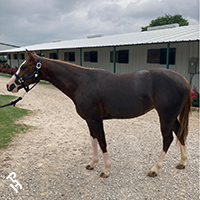
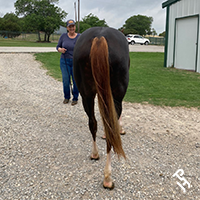
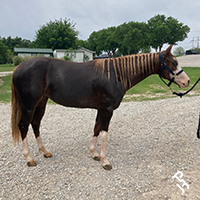
Transferring ownership keeps a Paint Horse’s record up to date and lets you take advantage of all opportunities offered by APHA. Usually, this is submitted by the buyer. Transfers can be submitted at PHcentral or by postal mail.
Let’s get started! You’ll need the following:
- Original APHA registration certificate for the horse
- If you don’t have this, complete the Affidavit for Duplicate Certificate form and provide its required photos, plus material below.
- Signed transfer report form (usually on the back of the original certificate)
- The owner of record signs as the seller.
- Your information goes in the buyer section.
- Note date of sale.
- Payment for fees.
- Submit your transfer online at PHCentral for faster service and lower fees. Watch our how-to video for step-by-step details.
Before a foal can be registered with APHA, a Stallion Breeding Report must be on file with the association. The Stallion Breeding Report is filed by the stallion owner at the time of breeding. It lists details about the stallion, exposed mares, breeding dates, breeding method and more. Report all eligible mares exposed to the stallion for a particular breeding season.
The stallion owner at time of breeding can submit the Stallion Breeding Report online at PHcentral or via postal mail using the physical form. Submit the work online for faster service and discounted fees!
Tips for Stallion Breeding Report submission:
-
- Make sure your stallion is enrolled for breeding. All stallions (Paint, Quarter Horse and Thoroughbred) must be enrolled for breeding with APHA before a Stallion Breeding Report can be filed and the foal(s) registered. Enroll the stallion for breeding online at PHcentral or by submitting the Horse Enrollment for Breeding form by mail to APHA along with your Stallion Breeding Report. Check your stallion’s status at PHcentral.com—log into your profile, select the stallion from your list of owned horses and check “Breeding Records.”
- Submit by the deadline for lowest rates. The Stallion Breeding Report form can be submitted to APHA via PHcentral or physical mail—the deadline for submission is November 30 of the breeding year (postmark date) to avoid late fees. For stallions standing south of the equator, the deadline is by May 31 of the breeding year.
- Submit your Stallion Breeding Report online for the best rates. Watch our “How to Submit a Stallion Report” video for a step-by-step guide.
- Use the correct registration number. If a stallion or mare is registered with multiple associations, make sure you use the horse’s APHA registration number on all APHA work. For a Quarter Horse, put a Q or QX (appendix) before the AQHA registration number (if there is a zero after the X, please omit the zero). For a Thoroughbred, put a J before the Jockey Club registration number.
- Stallion owner signature required. Be sure the correct signature appears on the report. Even if a third party stands the stallion, only the recorded stallion owner or authorized agent can sign the report or submit the Stallion Breeding Report online. If the stallion sells during breeding season, each owner is responsible for submitting a report reflecting the breedings occurring during his or her ownership.
- Release your breedings. Marking a breeding “released” is for both the stallion owner and mare owner—this allows the mare owner to register their foal online for fastest service and lowest fees. Both online Stallion Breeding Reports and the current Stallion Breeding Report form designate breedings as “released” by default.
- One breeding year per report. Each breeding year requires its own Stallion Breeding Report submission.
- Include payment for fees. That allows your work to process faster and in the most efficient way. Current fees always apply—see the APHA Rule Book fee schedule for details.
- Mare Entry. If you’ve searched for the horse by registered name or registration number and she’s not found, it is probably because the mare hasn’t yet been enrolled for breeding with APHA. You will use the checkbox that says “Enter Mare Data Manually.” When that is checked, you are able to enter details for a Quarter Horse or Thoroughbred mare by typing in her information. Only use that Manual Data Entry when the horse is not found in the search function.
Knowledge of Paint Horse genetics is rapidly evolving, and researchers are still unearthing new genes that impact expression of the white-spotting patterns for which the Paint breed is known. Breeders and owners can put the power of genetic testing to work with a quick and easy DNA test.
Why Test?
The answers are simple:
-
-
- Parentage verification is required for registration as of January 1, 2022. This applies to all registrations, regardless of breeding method or horse age.
- Make smarter breeding decisions. Knowing which color, pattern and disease genes your horse carries means you can make smarter breeding choices and prevent heartache down the road. Sidestep recessive genetic conditions by not breeding carriers together.
- Breeding stallions must have Genetic Health Panel results on file. This is required in addition to DNA genetic typing. Required tests are HYPP, HERDA, GBED, MH, PSSM1 and OLWS.
- For horses that already have their 5-Panel Genetic Health test results from AQHA, but need the OLWS test to be APHA-compliant. Submit the OLWS Equine Genetic Health Test Order Form.
- Reduces risk and might help improve Regular Registry chances. Genetic testing helps take some inherent risk out of breeding Paints. You’ll be able to select a sire or dam based on genetic potential to pass along a “Paint” pattern gene, along with more tangible things like conformation, athleticism, temperament and more.
- Testing is quick, easy and cost-effective. Genetic testing is painless and easy for any horse owner—genetic testing uses DNA from hair roots to determine which genes your horse carries. No guesswork required!
-
Learn more about Paint patterns and the power of genetic testing on our “Genetics 101” page.


Official Labs for APHA Genetic Testing
APHA’s official testing partners are the Veterinary Genetics Laboratory at the University of California–Davis and Etalon Diagnostics. For genetic health and color/pattern panels, APHA members have a choice between the labs. All parentage verification testing is performed at the University of California-Davis only.
The Procedure
Genetic testing is a simple procedure, done with 30 to 50 hairs (with intact roots) from your horse. Mane hair is normally used. However, if a young foal is being tested, it is necessary to pull tail hair.
For genetic typing or parentage verification, the horse’s DNA profile is generated. When compared to the profiles of the sire and dam, the foal can be confirmed or excluded as offspring. Testing for genetic health conditions, colors and/or patterns yields specific results for the test performed. Results are recorded on the horse’s APHA profile. Color, pattern and health results are printed on the horse’s APHA certificate, as well.
Order DNA Testing Kit
Order genetic tests for your Paint from UC-Davis at PHcentral or order Etalon tests at etalondx.com. Or you can complete the DNA Kit Order Form and mail the completed form to APHA’s MemberCare Department with payment.
Watch our how-to video!
Available tests include:
-
-
- Coat Colors: Extension/red factor, agouti, cream, pearl, champagne, dun, silver, gray
- Pattern Genes: Tobiano (T), Frame Overo (O), Sabino 1 (SB1), Splash White (SW1/2/3/5/6/7/8), Dominant White (W5/10/20/22/31/32/34/35)
- Genetic Health, including: HERDA, HYPP, GBED, MH, PSSM1, OLWS, MYHM
- Performance (Etalon): Temperament*, Gait, Speed
-
Registration Forms
- Affidavit for Name Change
- Application for International Appendix Registration
- DNA Testing Kit Order Form
- Gelding Report Form
- Registration Application
- Request for Corrected Certificate
Breeding Forms
- Breeder’s Certificate Indemnity Agreement
- Breeding Lease Agreement
- Breeding Lease Cancellation
- DNA Import Permit
- DNA Testing Kit Order Form
- Enrollment for Breeding
- OLWS Equine Genetic Health Test Order Form
- Stallion Breeding Report
- Vitrified Embryo Transfer Application
Transfer Forms
- Affidavit for Duplicate Certificate
- Affidavit of Heirship – No Will
- Affidavit of Heirship – Will with No Probate
- Stableman’s Lien Foreclosure
- Transfer Indemnity Agreement
- Transfer Report
Signature Forms
Looking for Show Forms?
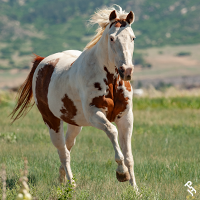
Resources
- Printable Registration Forms
- PHcentral.com – the fastest, simplest and most cost-effective way to submit work
- How To Submit Work Online
- Learn More About The Breed
- Learn More About Equine Genetics
- Credit Card Authorization
- Horse Competition Record
- Get/Produce/Progeny Record

